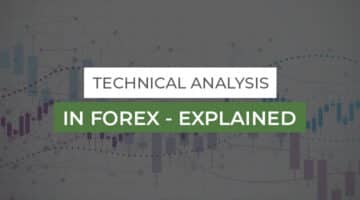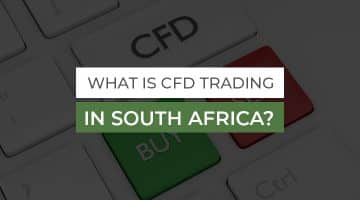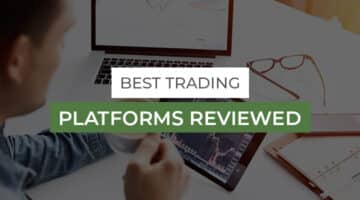What are Index Points?

In this article
Do you know what the index point is? A market index point is a concept that is interlinked with the financial industry. You will see this term, commonly used in exchange centres all over the world. This can be the marketplace of bonds, stocks, or some financial securities or instruments.
Before you gain a complete understanding of the market index points, it is important to know the meaning of a market index.
What is an index?
The index is all defined to be a statistical indicator. This indicator is used for providing some essential representation of any value of securities that constitutes it. One such example is “The S&P 500 Index”. This is what index is all about!
What is the market index?
Defining the term market index is one such index used to represent the value of any particular market. It is used for measuring the overall change in the market, including the bond market and the stock market.
Defining market index point
Discussing the point in the market index is one such concept that is generally used to measure the value of securities. Of course, these securities are already part of the list in the index. But the point will have a diverse meaning depending on whether it is the stock market index or the bond market index.
When referring to the stocks or the stock market indexes, a “point” is equivalent to the $1. And when referring to the bonds or the bond market indexes, this point is equal to the $10. This is because every single bond price is equal to the percentage of $1,000.
Calculating the index values & performance
Differences in how the index values are calculated can take place based on the index weighting scheme. For your ease, we will be explaining to you all about the calculation of market-cap-weighted index values.
Once the market values and prices of stocks within an index start to fall or rise, the index reflects this whole movement using the series of index values. You can learn about the index values daily once the market closes. These values are calculated and published on a daily routine. In most cases, they are completely calculated in real-time. This constant and sudden change in the index value starting from one point to the other point represents the overall performance of this index.
How to use index values for calculating performance?
Now you might be curious to know about valuating the index values and their performance! This index performance generally happens between any two of the dates. A company’s overall representation within the indexes is based on their sizes within the market-cap-weighted indexes. You can calculate it by dividing the ending index value by the beginning index value. Here we have an example for you:
Day 1 index value = 100.0
Day 4 index value = 103.1
((103.1 / 100) -1) x 100 = 3.1%
Why are index values varying widely across indexes and the index providers?
Comparing all the values of the indexes designed for measuring the same market or the market segments will be a bit complex. It might be irrelevant in some conditions. You can start or launch the indexes at various points at a time and with multiple base values. Therefore, you should never be hung up on values on your own. But make sure that the values should decline or regrow with time.
For instance, if Index A had a 100 in 2015, then the value will increase to 150 by 2018. In this way, in 3 years, the index value has increased by 50%.
If Index B has experienced the same market, it had the starting base value of 1,000 in 2015, and the value grows to 1,500 as in the year 2018. So then, in 3 years, the index value has increased by 50%.
Comparing the values of 2018 of 150 and 1,500 will be completely irrelevant because they all started with different base numbers. It would help if you were not comparing their values but their performance.
How are the indexes weighted?
Indexes are yet constructed to measure the performances and characteristics of specific markets or the asset classes that are somehow market cap-weighted. Index constituents are fully weighted according to the total market cap or even the market value, which already has some outstanding shares.
A company’s overall representation within the indexes is based on their sizes within the market-cap-weighted indexes. And their overall performance contributes to the whole performance of the index proportionately.
In short, all such companies who are having the largest market cap will somehow represent the largest weight within the index. Few mega-companies like Google or Apple will positively impact the index’s overall performance compared to any small-cap company. Therefore, it has always been said that for mega-companies, it is easy to measure the index points for a better performance inquiry.
This is one such method of weighting the index constituents, which is the most commonly used one. But in recent years, you might have seen some considerable development where hundreds of best alternatively-weighted indexes were introduced. But in all such developments, market-cap-weighted indexes stay much relevant. They are used for measuring any changes happening in overall market size with time. So if you have newly stepped into the market, it will be a lot advantageous for you.
If we talk about the original market-cap-weighted indexes, it is included with the company’s outstanding shares. This might be problematic for companies that do not have enough shares available for trading in the open market, including government-held shares or significant privately-controlled holdings. However, by the term float adjusting an index, just those shares are available for the public represented within the index.
Bottom line
Next time you step into any financial institution or the exchange centre, you will notice the term index point. Stock marketers will be thoroughly familiar with this term by all ends. But we are sure that you must have got enough information about calculating the index points and how you can weigh them with our guide.
Jason Morgan is an experienced forex analyst and writer with a deep understanding of the financial markets. With over 13+ years of industry experience, he has honed his skills in analyzing and forecasting currency movements, providing valuable insights to traders and investors.
Forex Content Writer | Market Analyst
Relevant Posts

Day Trading and Swing Trading the Currency Market
[top_three_brokers] When it comes to currency trading, the timing of trades can have a huge…
Read more

What is Technical Analysis in Forex – Explained
[top_three_brokers] The most common question that pops up in a new trader head is, "what…
Read more

Forex Trading in Namibia
[top_three_brokers] The majority of beginner traders are charmed by stories of successful forex traders in…
Read more

What is CFD Trading in South Africa?
[top_three_brokers] There's been an immense increase in the popularity of CFD trading in South Africa. With…
Read more

MetaTrader 5 – What is MT5?
[top_three_brokers] MetaTrader 5 is a multi-asset, multi-functional trading platform used by traders from around the…
Read more

Why You Should Trade on a Forex Demo Account?
[top_three_brokers] Unless you have a crystal ball, which can predict what will happen in the…
Read more

Tick Chart Explained
[top_three_brokers] As a trader, you use a wide variety of charts to analyse markets. If…
Read more

Best Trading Platforms Reviewed
[top_three_brokers] Naturally, many traders are interested in learning about the best trading platform. One of…
Read more

How Does Forex Trading Work?
[top_three_brokers] Forex, or the foreign exchange market, differs significantly from stock trading. Therefore, these differences…
Read more
4 Tips for Choosing a Forex Broker
If you are a trader in the Forex or foreign exchange market, then there is…
Read more

Day Trading and Swing Trading the Currency Market
[top_three_brokers] When it comes to currency trading, the timing of trades can have a huge…

What is Technical Analysis in Forex – Explained
[top_three_brokers] The most common question that pops up in a new trader head is, "what…

Forex Trading in Namibia
[top_three_brokers] The majority of beginner traders are charmed by stories of successful forex traders in…

What is CFD Trading in South Africa?
[top_three_brokers] There's been an immense increase in the popularity of CFD trading in South Africa. With…

MetaTrader 5 – What is MT5?
[top_three_brokers] MetaTrader 5 is a multi-asset, multi-functional trading platform used by traders from around the…

Why You Should Trade on a Forex Demo Account?
[top_three_brokers] Unless you have a crystal ball, which can predict what will happen in the…

Tick Chart Explained
[top_three_brokers] As a trader, you use a wide variety of charts to analyse markets. If…

Best Trading Platforms Reviewed
[top_three_brokers] Naturally, many traders are interested in learning about the best trading platform. One of…

How Does Forex Trading Work?
[top_three_brokers] Forex, or the foreign exchange market, differs significantly from stock trading. Therefore, these differences…
4 Tips for Choosing a Forex Broker
If you are a trader in the Forex or foreign exchange market, then there is…


